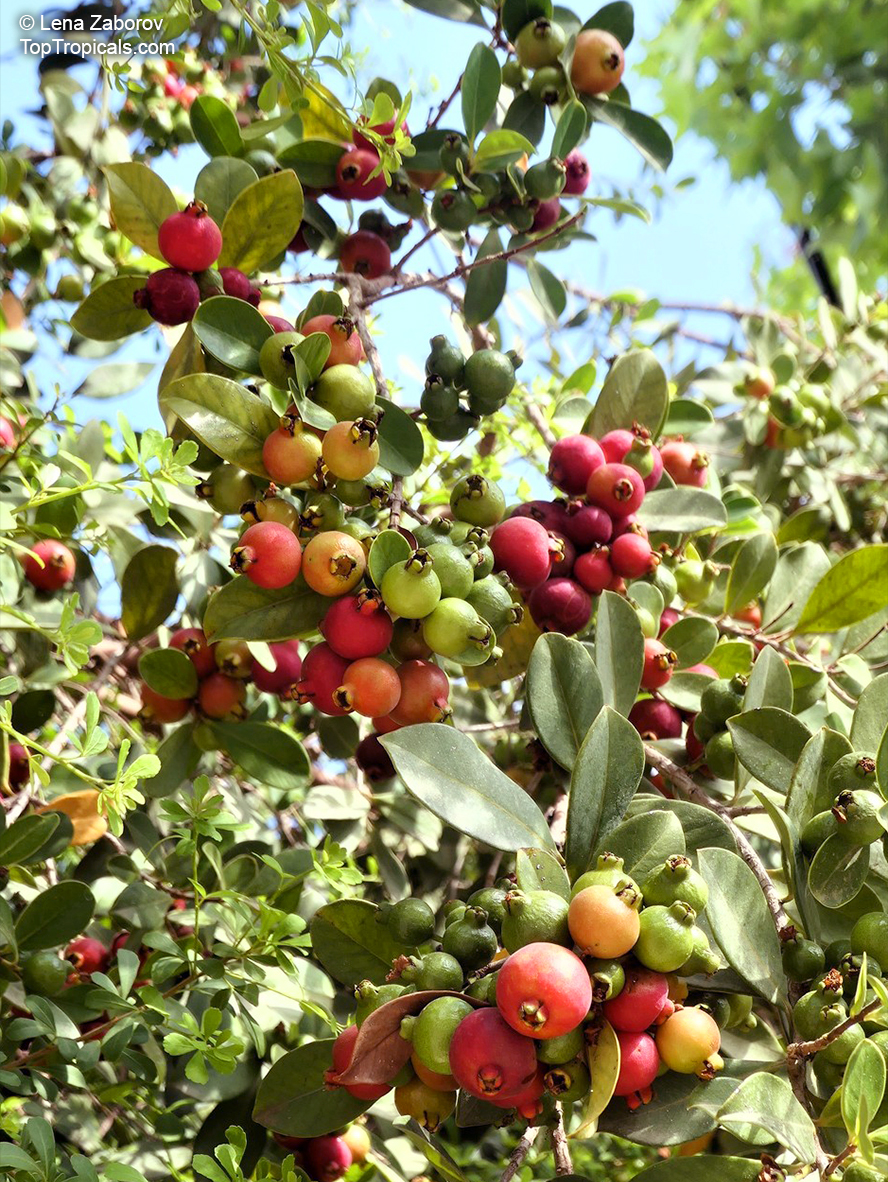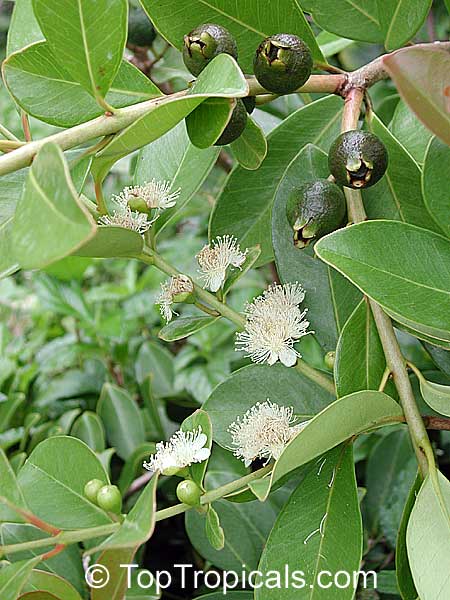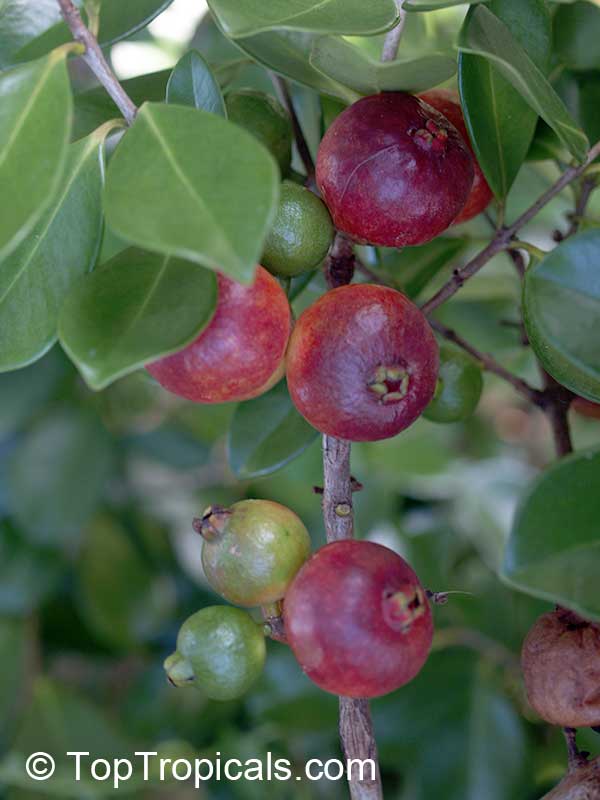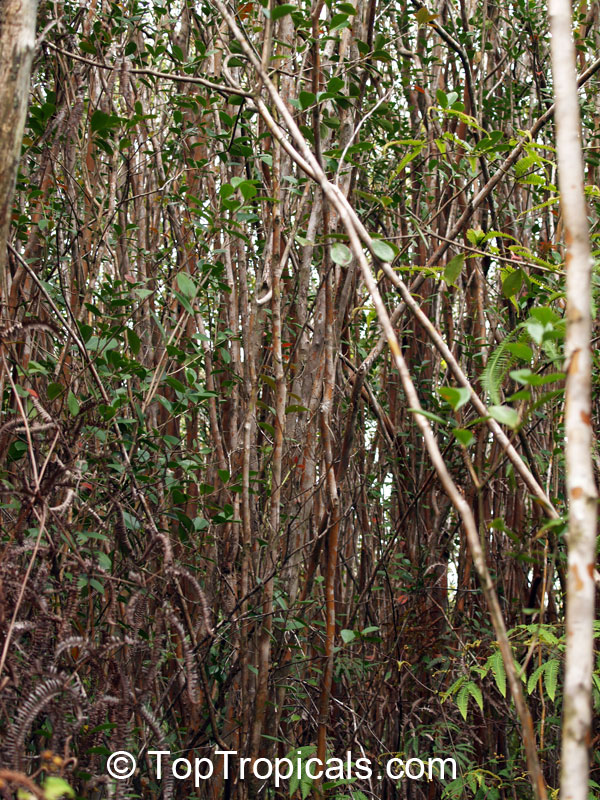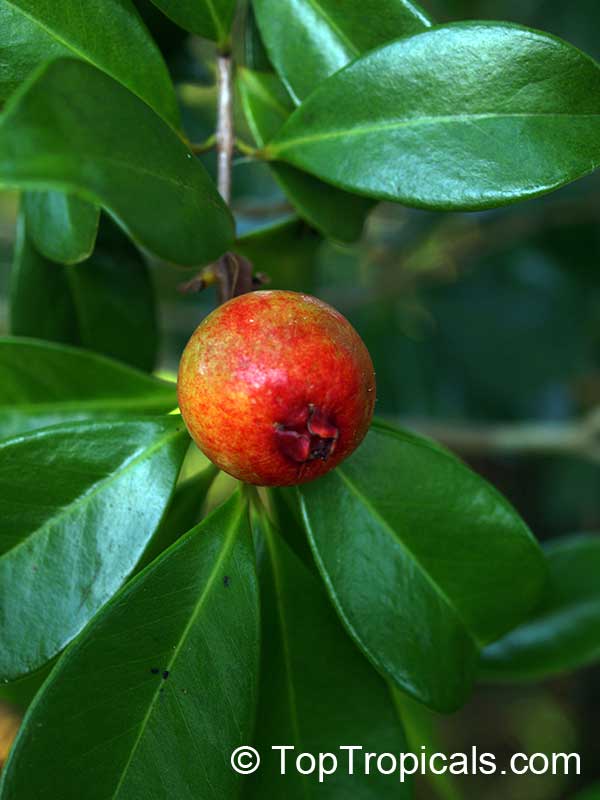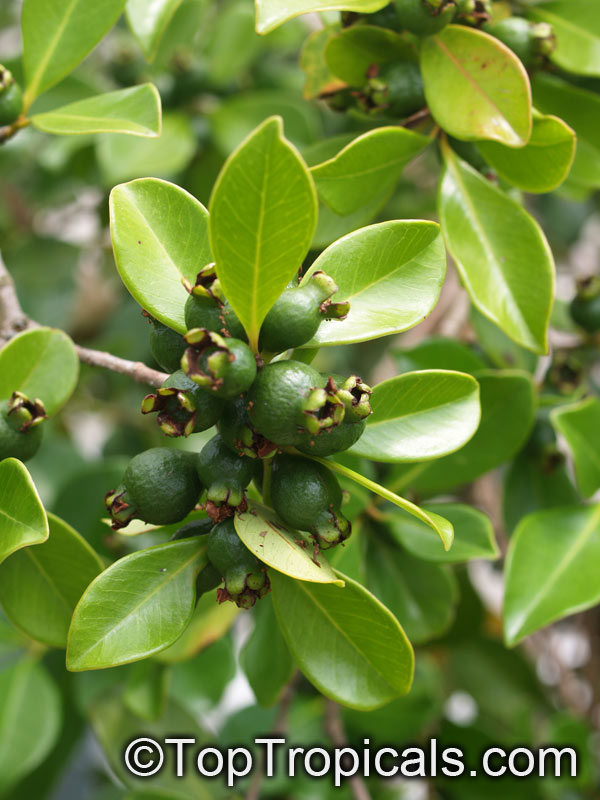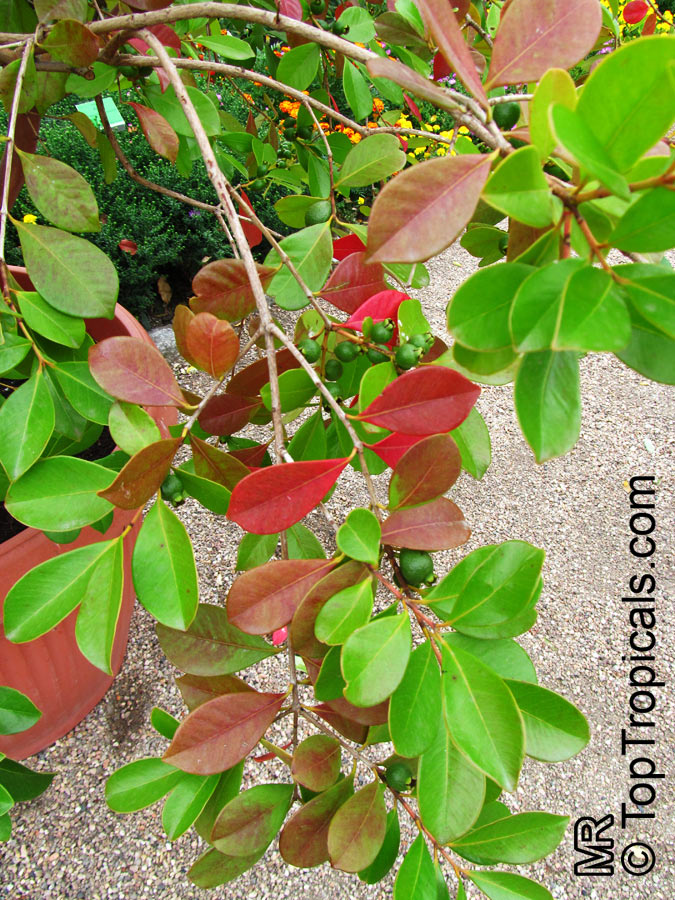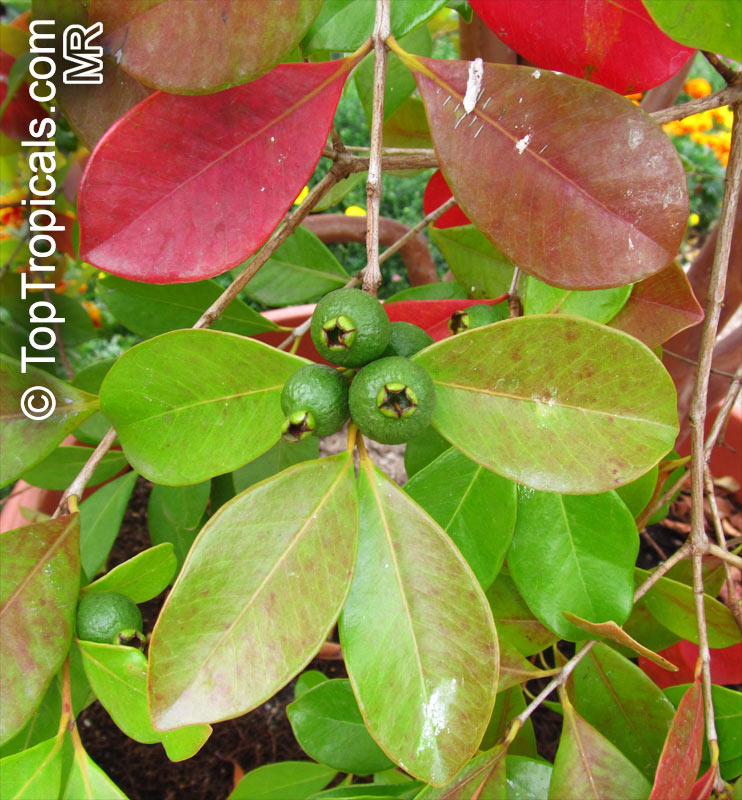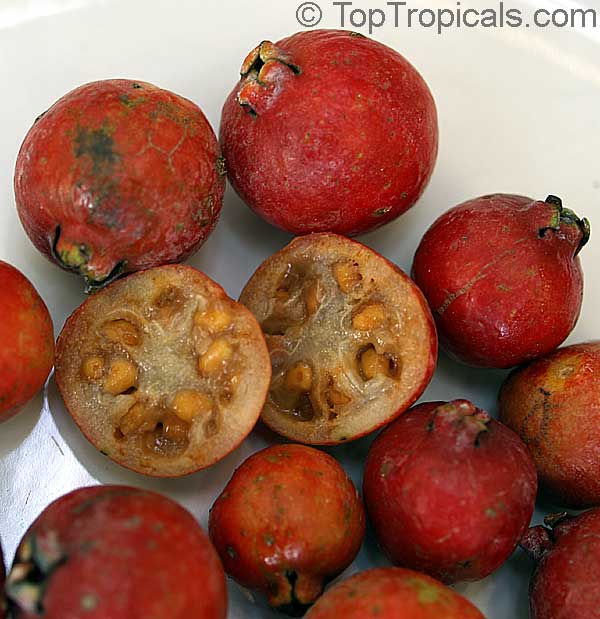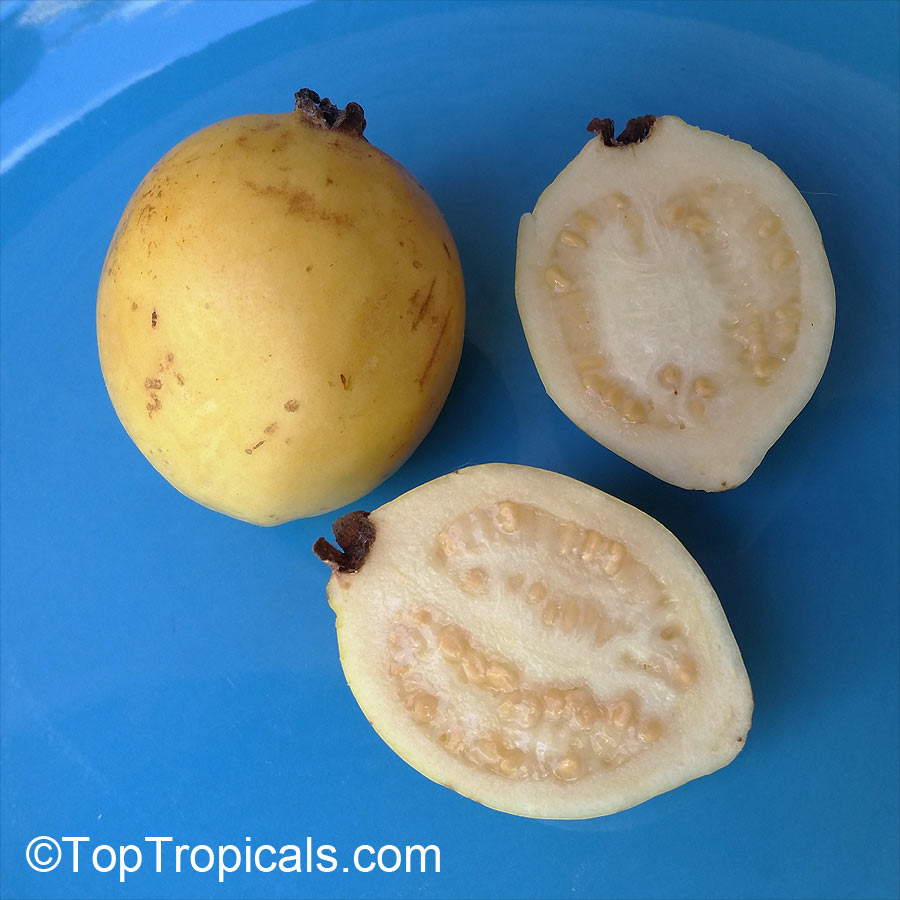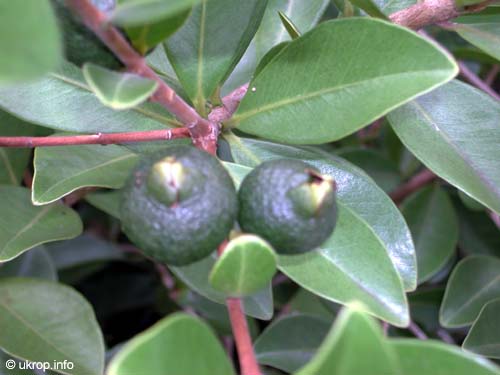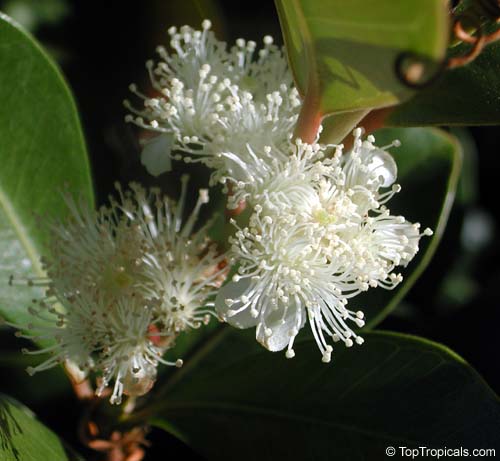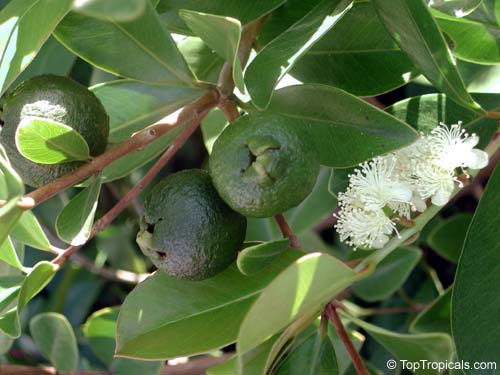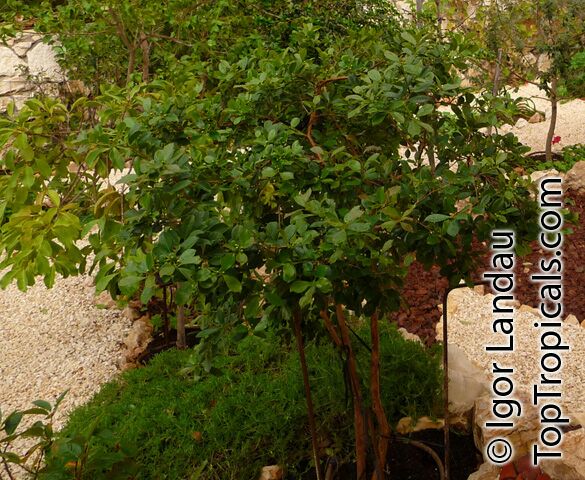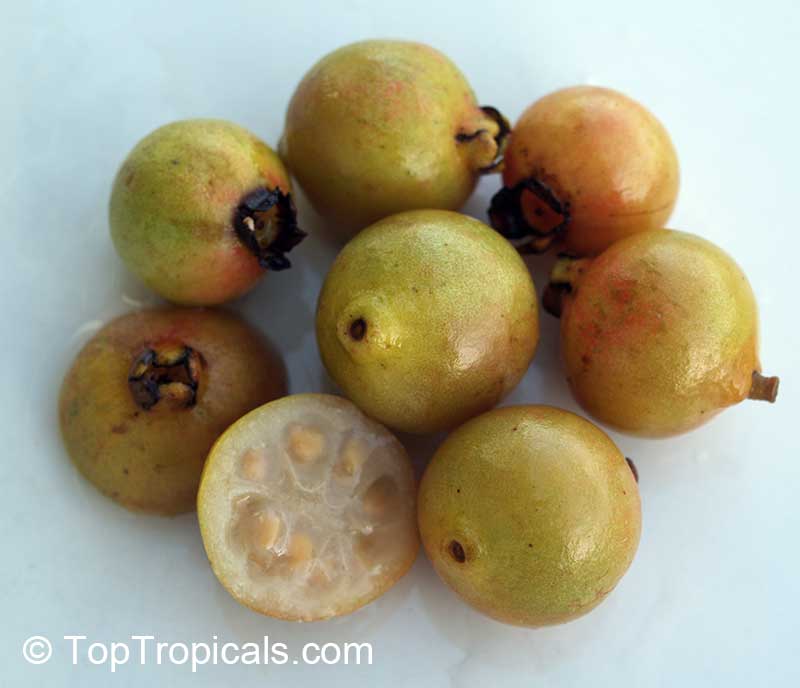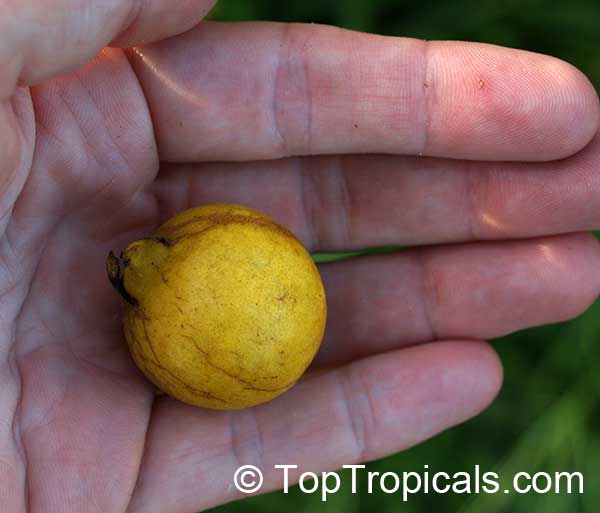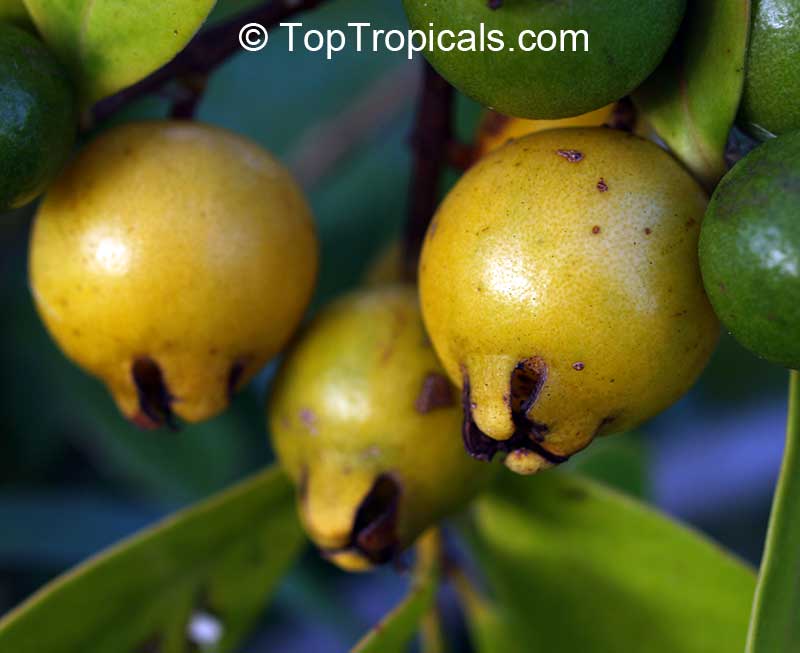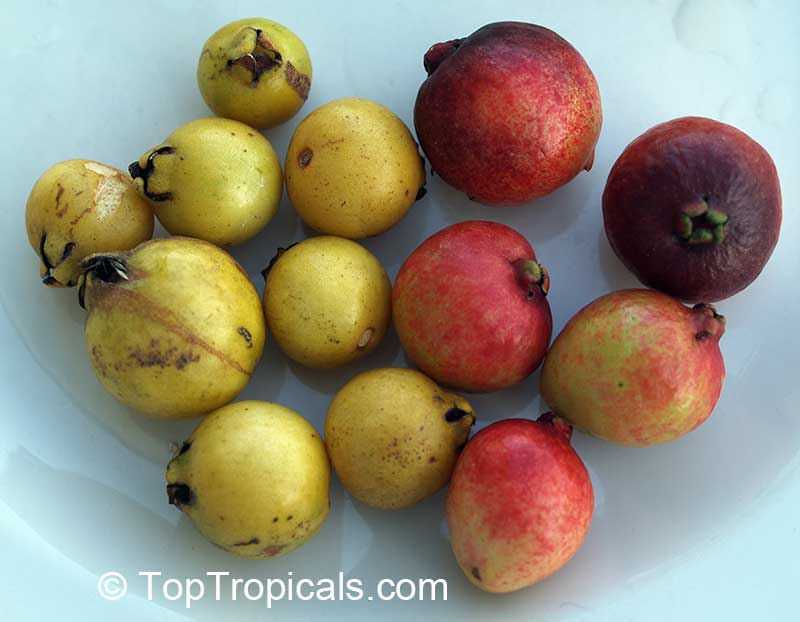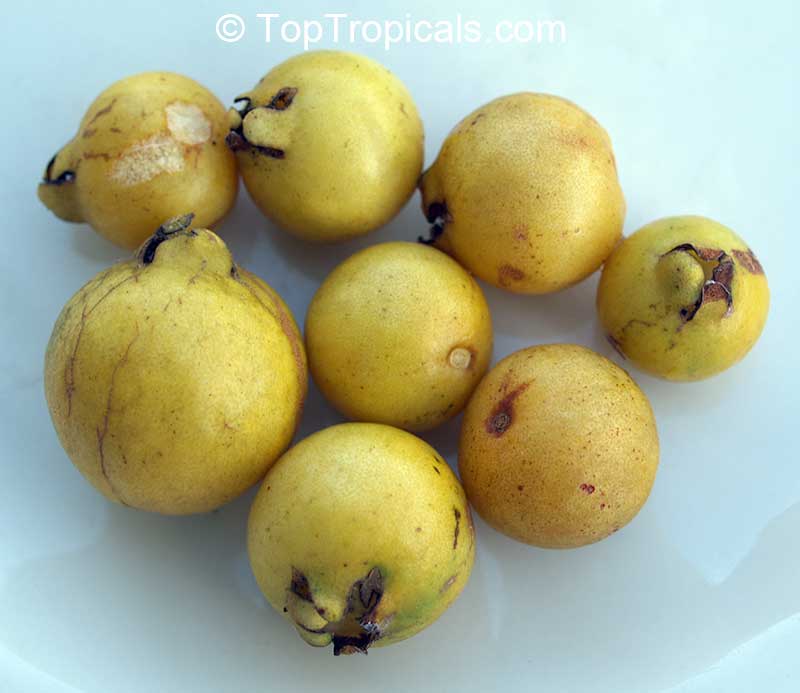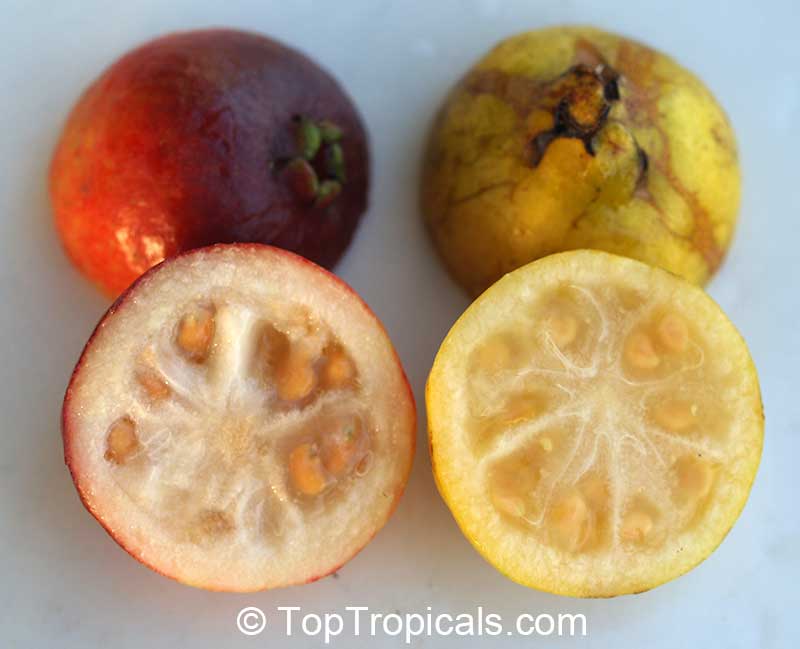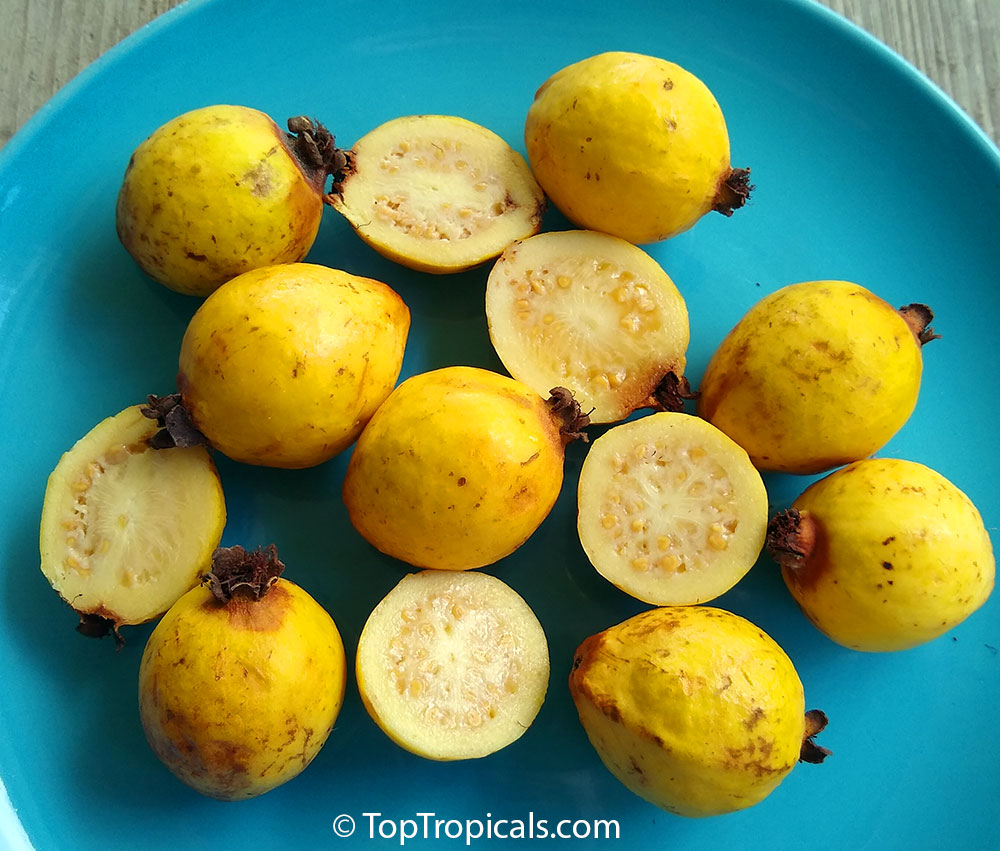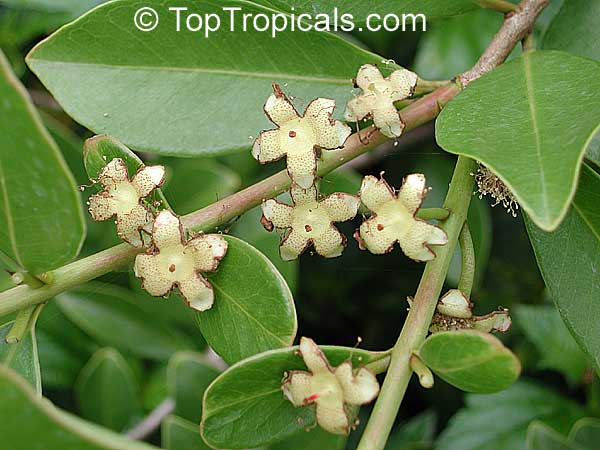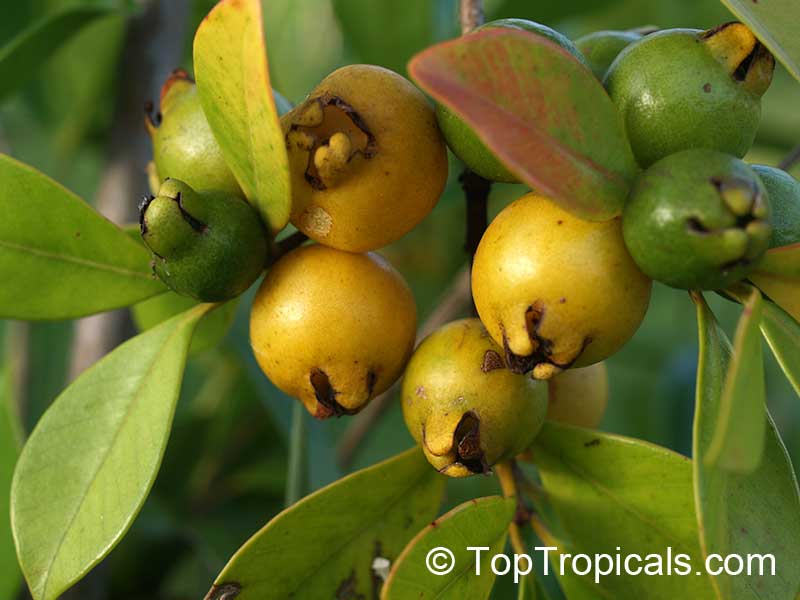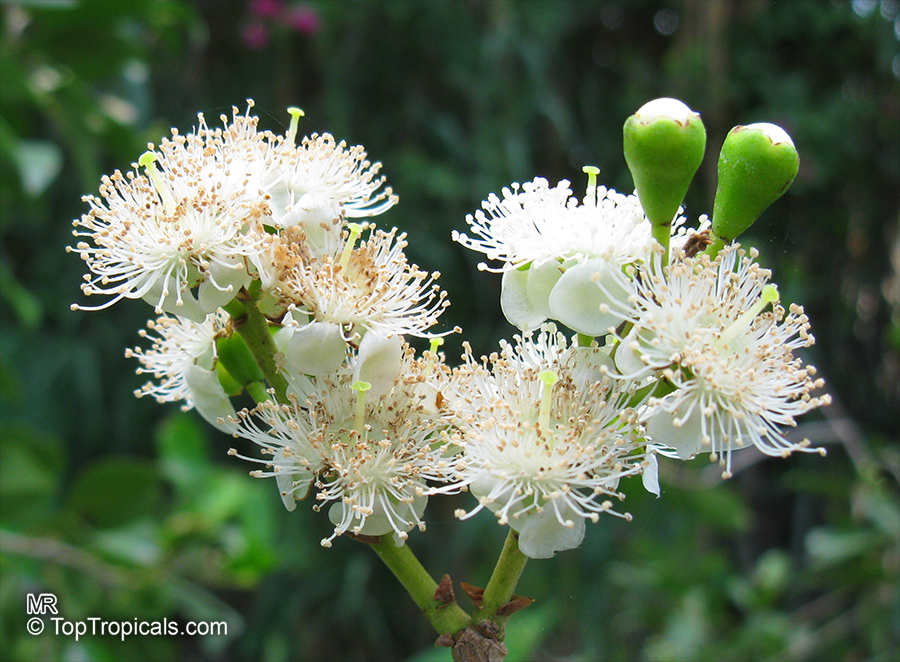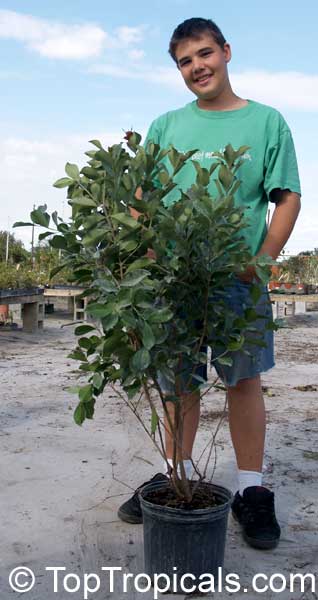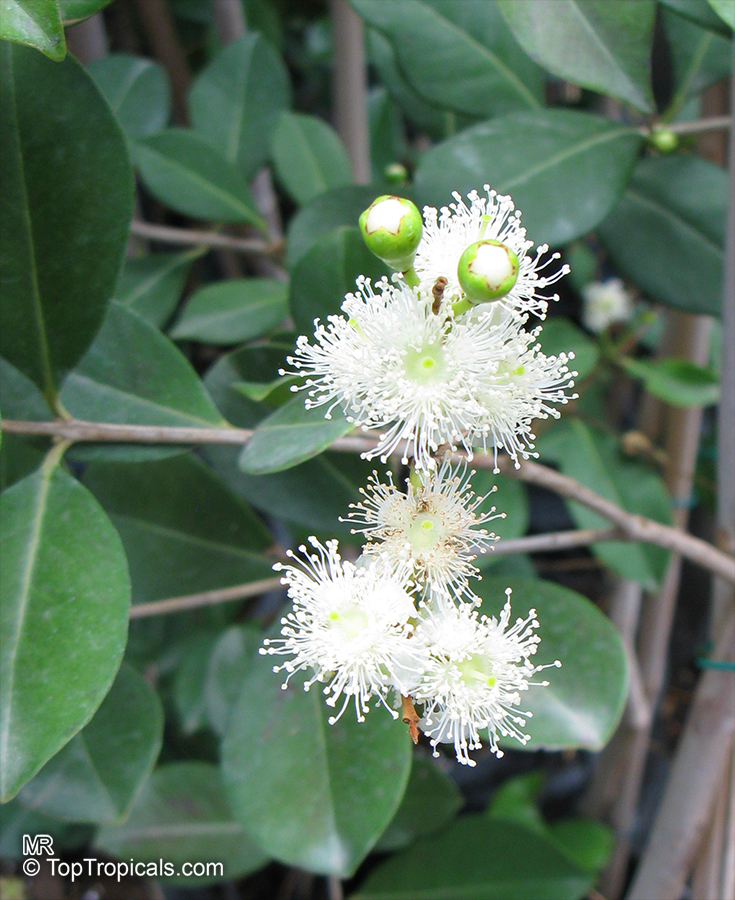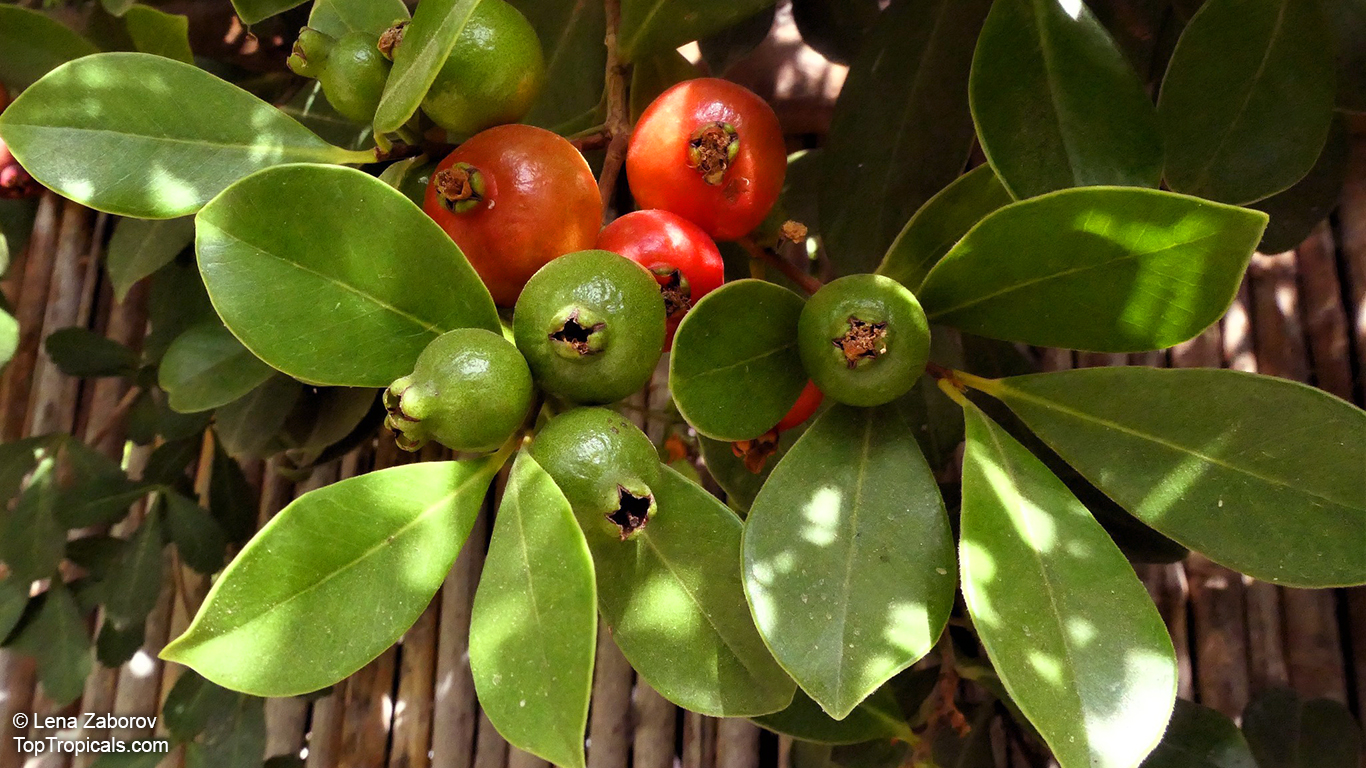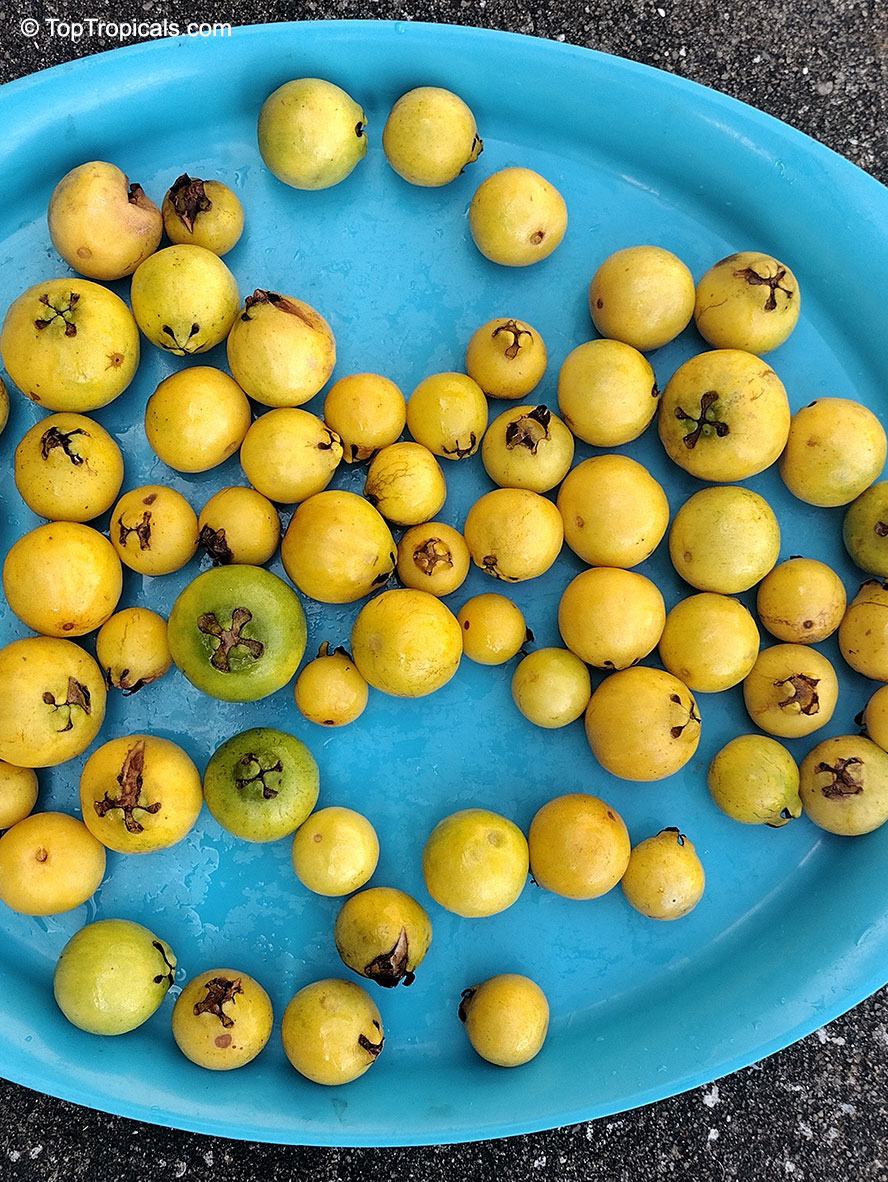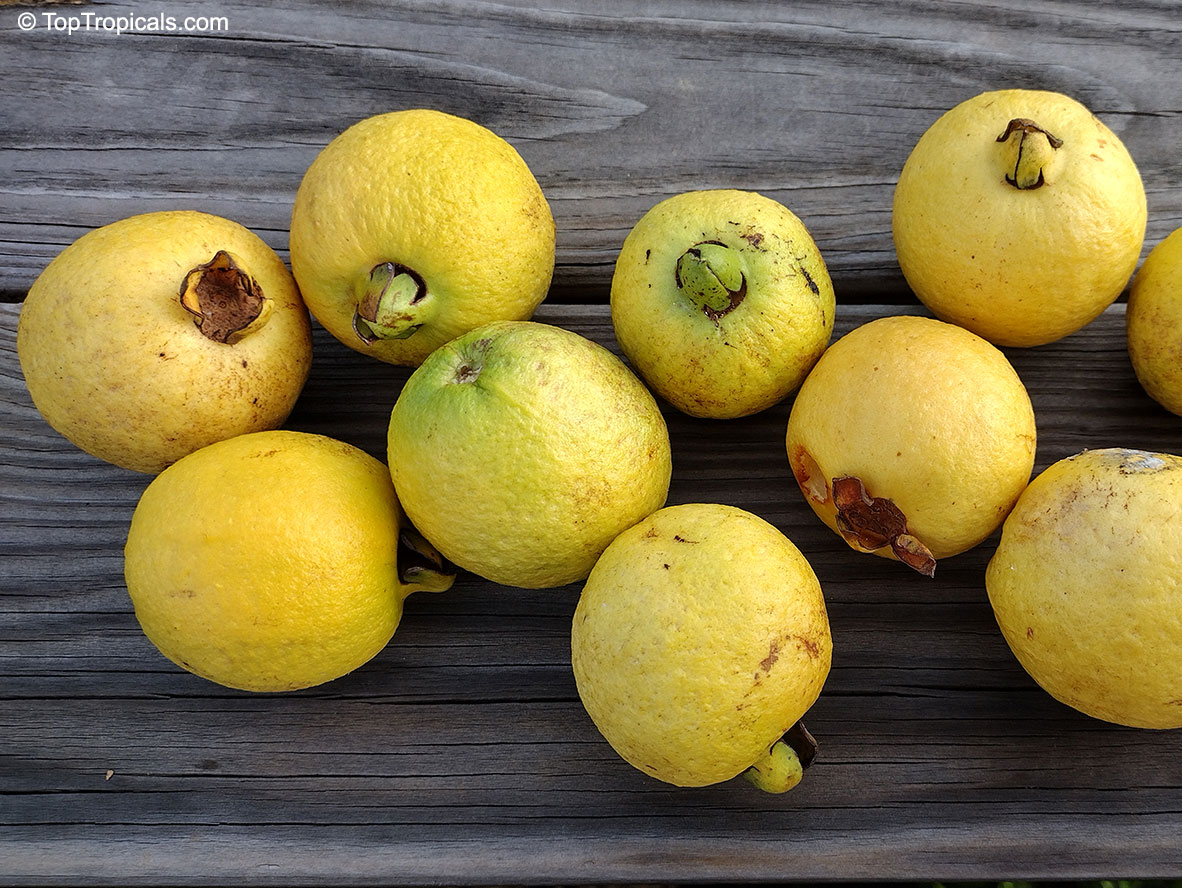Psidium cattleyanum (Cattley Guava)
Top Tropicals Plant Encyclopedia
Botanical names: Psidium cattleyanum, Psidium littorale
Common names: Cattley Guava, Sand Plum, Strawberry Guava
Family: Myrtaceae
Origin: Brazil










The Cattley Guava is a very attractive, cold hardy and undemanding small tree growing if unpruned to about 20 ft high, with glossy deep green evergreen leaves. New growth is reddish, which adds to the attractiveness of the tree and it has a handsome reddish-brown bark which peels.
1-2" fruits are produced from late spring to autumn from 1" white flowers, they are round, with a shiny reddish or yellow color. The pulp has many hard seeds and the flesh has a pleasant sweet to sub-acid flavor. Fruits can be eaten fresh or used in jellies, jams, juices and drinks.
There are two major varieties: Red and Yellow. Red-skinned fruits have white flesh more or less reddish near the skin. The yellow variety, sometimes called the Giant Puerto Rican Cattleya, has somewhat larger leaves and is a little more cold sensitive. The yellow-skinned fruits have faintly yellowish flesh; they are slightly larger and sweeter than those of the red variety.
Cattleya guavas make excellent landscape small trees, but also are easily grown and fruited in large containers. Growth rates are usually about two to four feet a year under good conditions. Trees should be fertilized in the landscape two to three times a year with a balanced fertilizer. Young trees may require some pruning to keep them desirably shaped. However, older trees require little attention. Cattley Guava is shallow-rooted but in spite of that, it is drought tolerant. It is also able to endure flooding for short periods. Guavas can take heavy pruning, however, and can be used as informal hedges or screens. Since the fruit is borne on new growth, pruning does not interfere with next years crop.
There is a number of properties of Cattley Guava that make it very special for any tropical garden.
- It is much hardier than the Tropical Guava and can survive temperatures of low 20's F without any damage.
- It responds well to pruning, and since the fruit form on new growth, pruning won't effect the production.
- It is one of the best choices for a rapidly growing hedge plant and wind protector for other tropical plants.
- It is one of the very few tropical plants that can easily tolerate alkaline soils - in fact, it seems as though it enjoys them! It can grow even in limestone. It can grow in very poor soils that would barely support other fruit trees.
- It requires very little watering once established, and can tolerate long periods of drought (young plants should be watered regularly until established).
- It produces masses of delicious fruit year to year under minimum or no care and doesn't look like has any pest problems.
- Trees have good salt tolerance and can be used close to coastal areas without any problem.
Similar plants: Psidium cattleyanum (Cattley Guava)
Recommended Fertilizer: SUNSHINE C-Cibus - Crop Nutrition Booster
SUNSHINE-Honey - sugar booster
Recommended Fertilizer: SUNSHINE C-Cibus - Crop Nutrition Booster
SUNSHINE-Honey - sugar booster
See picture of actual plants for sale
This item is certified for shipping to all states/territories, including Puerto Rico (with phytocertificate), US VI (with phytocertificate), Louisiana, Arizona, Texas, California (with phytocertificate). This item is not certified for shipping to Hawaii.